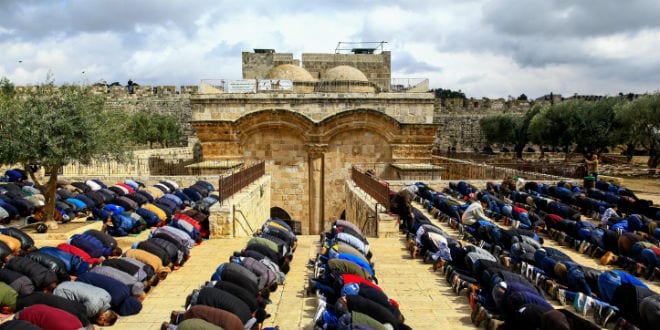A few of my readers recently asked me to explain the difference between “Palestinians” living inside and outside of Israel’s borders. Who are the “Palestinians” anyway? First, see below:
“Palestine” does not exist today as a nation-state, but at multiple times in history, including the present, it has been one of the names of a place. The Romans, recalling the defunct Philistines – non-Arab Sea People – coined it after defeating [Jewish general] Bar Kochba in 135 CE to disassociate what had been Judaea from Jews. But, as shown by maps and travelers’ journals, Judea remained in use through the centuries. With the Ottoman Empire’s dismemberment after World War I, the League of Nations’ “Palestine Mandate,” comprising east as well as west of the Jordan River, was entrusted to Britain. As JNS’ Jonathan Tobin [former Jewish Exponent editor] pointed out this week in writing about that New York Councilman’s tweets, during the Mandate it was Palestine’s Jews, not its Arabs, who answered to the name “Palestinian.”
Today, of course, “Palestinian” refers exclusively to Arabs, and “Palestine” to “Palestinians’ future state,” comprising to some, “the West Bank,” “East” Jerusalem, and Gaza, and to others, Palestine west of the Jordan River, period.
Jerry Verlin, Brith Shalom Media Watch 4/7/19
While there were some Arabs in Palestine in the 19th century, the region was desolate and undeveloped. In 1890, there were roughly 400,000 *Arab residents and 60,000 Jews. That compares to more than 12 million Jewish-Arab-other population today. The Palestinian Arabs (as I always refer to them) are the 2nd-3rd-4th generation of Arabs who fled their homes in 1947-48 Palestine/Israel, mostly at the instigation of their leaders, who assured them they would quickly return to take over the murdered Jews’ property (after the Jews were driven into the sea); or they were typical, displaced war refugees.
* “Arabs” included: Turks, Druze, Kurds, Circassians, Albanians, Bosnians, and (Christian) Greek Orthodox/Maronites/Armenians/Melkites
So far from being persecuted, the Arabs have
crowded into the country and multiplied till their
population has increased more than even all world Jewry
could lift up the Jewish population.
— Winston Churchill quoted by Joan Peters in From Time Immemorial
The majority of Arabs weren’t even born in Palestine, but were Arab migrants – or their descendants – from all over the Eastern Mediterranean and North Africa, who came there in search of employment. That’s because Palestine had begun to flourish when Zionist Jews came from the 1880s on, with muscles and money, to invest in their patrimony. Hence the large Arab influx to a backwater that had been all but forgotten by the world, but hadn’t been forgotten by the Jews. Between 1890 and the end of WW2, the Arab population increased by about 300%, much of which resulted from an influx of Arabs seeking employment. This compares with the ten-fold (1000%) increase of the Jewish population, which is also largely attributed to immigration (aliyah).
Differences between Palestinian Arabs and Arab Israelis:
While some Israeli Arabs style themselves “Palestinians,” they are full-fledged Israeli citizens with rights equal to Jewish Israelis and other Israeli nationalities (Druze, etc.). Israeli Arabs live in Israeli cities and communities and in many cases are indistinguishable from Jewish Israelis. Jews mingle with them on the streets, in the shops and malls, in the hospitals (many are doctors and nurses), in hotels and at entertainment venues, etc. Political parties represent them in the Knesset, although many Israeli Arabs complain that, “Our Arab legislators are always yelling ‘Palestine, Palestine’ but neglect the Arab public in Israel.”
Palestinian Arabs don’t live in Israel and aren’t Israeli citizens. They live in the Palestinian Authority, misruled by the corrupt Fatah organization, or they are citizens of Gaza, misled by the terrorist Hamas organization. The Palestinian Arabs are our enemies. Many of them claim that they want their own country. But their leaders say and act differently, demonstrating the overriding, true agenda is to get rid of the Jews, eliminate Israel, and establish the State of Palestine in its place (or in the case of Hamas, a Muslim caliphate). Despite the enmity towards Jews that permeates all aspect of their culture, many Palestinian Arabs depend on employment in Israel. About 150,000 Palestinians from the Palestinian Authority are currently working in Israel. About half of them sneak in without an official permit.
According to the Oslo Accords (1993), which are generally considered to still be in effect between the Palestinian Authority and Israel, Area A is controlled by the PA, Area B has shared control with Israel, and Area C is controlled by Israel. The PA has autonomy in all its large cities, which generally consist of one or more clans/tribes. Ramallah is the “capital,” with a more cosmopolitan population. All the cities are in Area A. Schools, hospitals, the Red Crescent, and other institutions are run by the PA, which receives an extraordinary amount of “aid” from individual countries, NGOs, the UN, and the EU. Elections are part of the Oslo plan, but have been “delayed” for nearly a decade. This pertains to Gaza as well.
(See this otherwise excellent article in the Washington Post which, in the last two paragraphs, diverges from reality and implies that Israel is disenfranchising the Palestinian Arabs by not allowing them to vote in Israeli elections! washingtonpost.com/world/2019/04/10)
Just this week we visited the Eretz (Land of Israel) Museum in Tel Aviv, which currently has an exhibit providing context and contrast to the Palestinian Arab/Israeli situation. The exhibit is a tribute to the Mizrahi Jews of Arab countries and Iran who have become the majority of Israel’s population. We were accompanied at the museum by an Atlantic City friend whose father’s family has Iraqi origins.
The exhibit educates us about the rich life and difficult times the Jewish communities had in Muslim Middle Eastern countries, as well as giving time lines of pogroms and atrocities against them going back thousands of years. The exhibition is part of a series of exhibitions at the Eretz Israel Museum that are devoted to the themes of immigration and multiculturalism in Israel. It closes July 31, 2019.
Dana Avrish, exhibition creator and curator explains:
The display features selected artifacts from the cultures of 11 Jewish communities in the Muslim sphere and invites viewers to share the journey that brought these communities to Israel. The exhibition title was inspired by the words stamped on the exit certificates and suitcases of hundreds of thousands of Jews: رحلة بدون رجعة (literally: a trip with no return).
Notwithstanding their connection to the cultures of the Muslim countries in which they lived, Jews throughout the generations, and especially in the modern age, suffered hardships that forced them to uproot themselves, transforming many of them into refugees. Although most of them longed to immigrate to Israel, the rupture with their countries of origin was a painful one. The experience of becoming Israeli in itself constituted a long and arduous journey, whose echoes continue to resonate in the present.
In summary, Palestinian Arabs are not Israeli citizens and the majority want to usurp Jewish sovereignty and turn Israel into Palestine. Israeli Arabs are Israeli citizens, although many are ambivalent about their status. Nevertheless, they are prosperous and free compared to other Arabs in every other country in the Middle East, especially compared to their brethren in Gaza and the Palestinian Authority. The experience of Mizrahi Jews successfully settling in Israel is in stark contrast to the Palestinian Arabs, many of whom are still considered “refugees” by the world community (and the PA) and aim to retain that status until Israel is destroyed.





